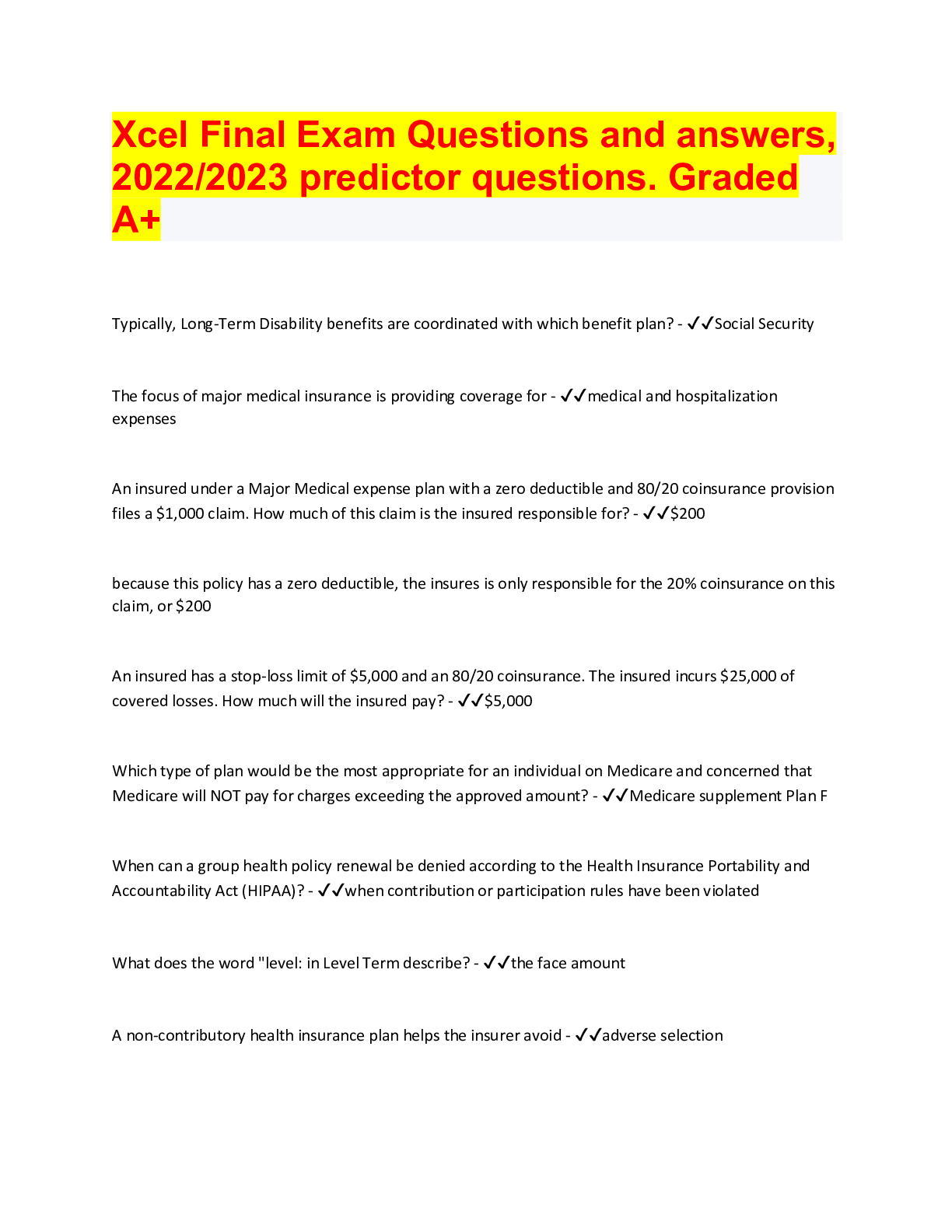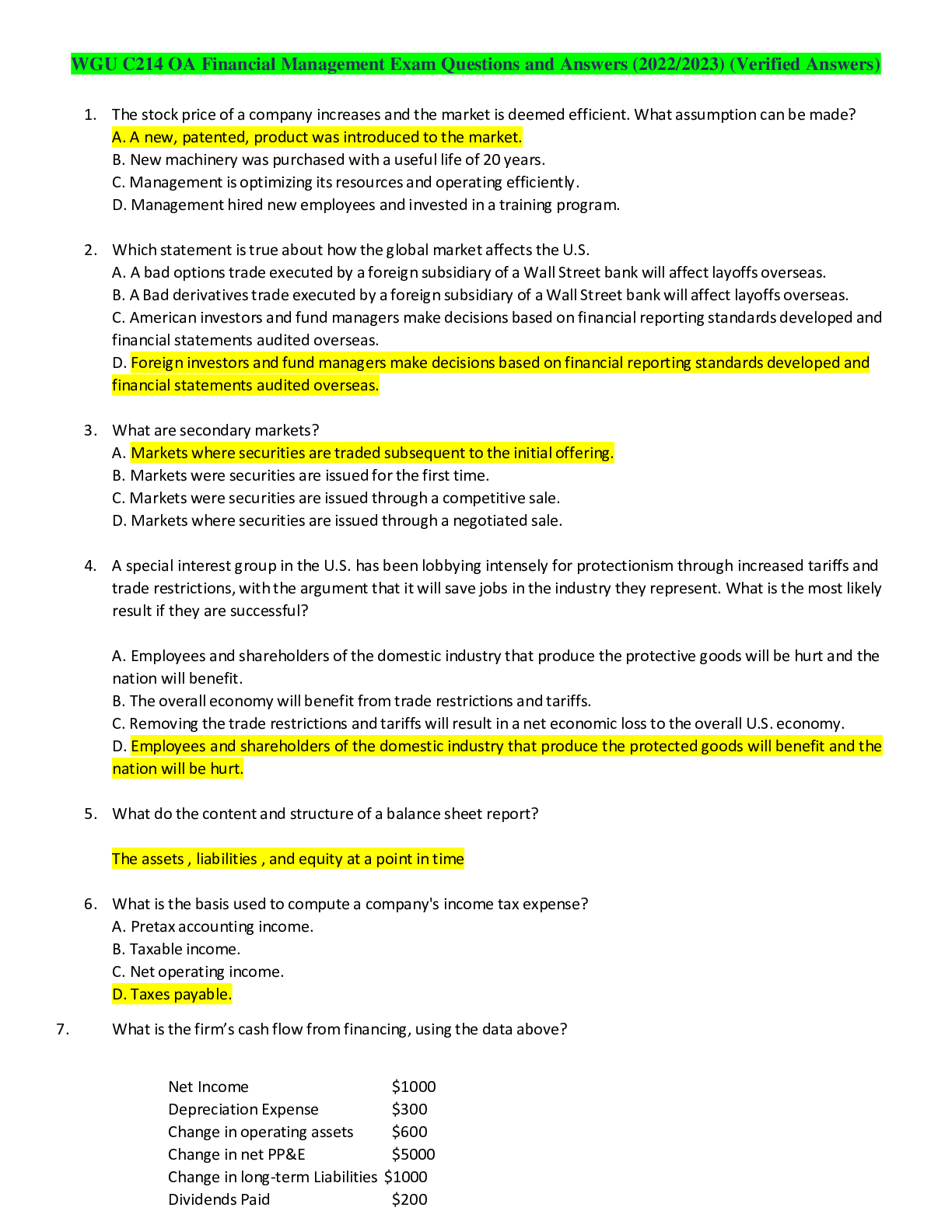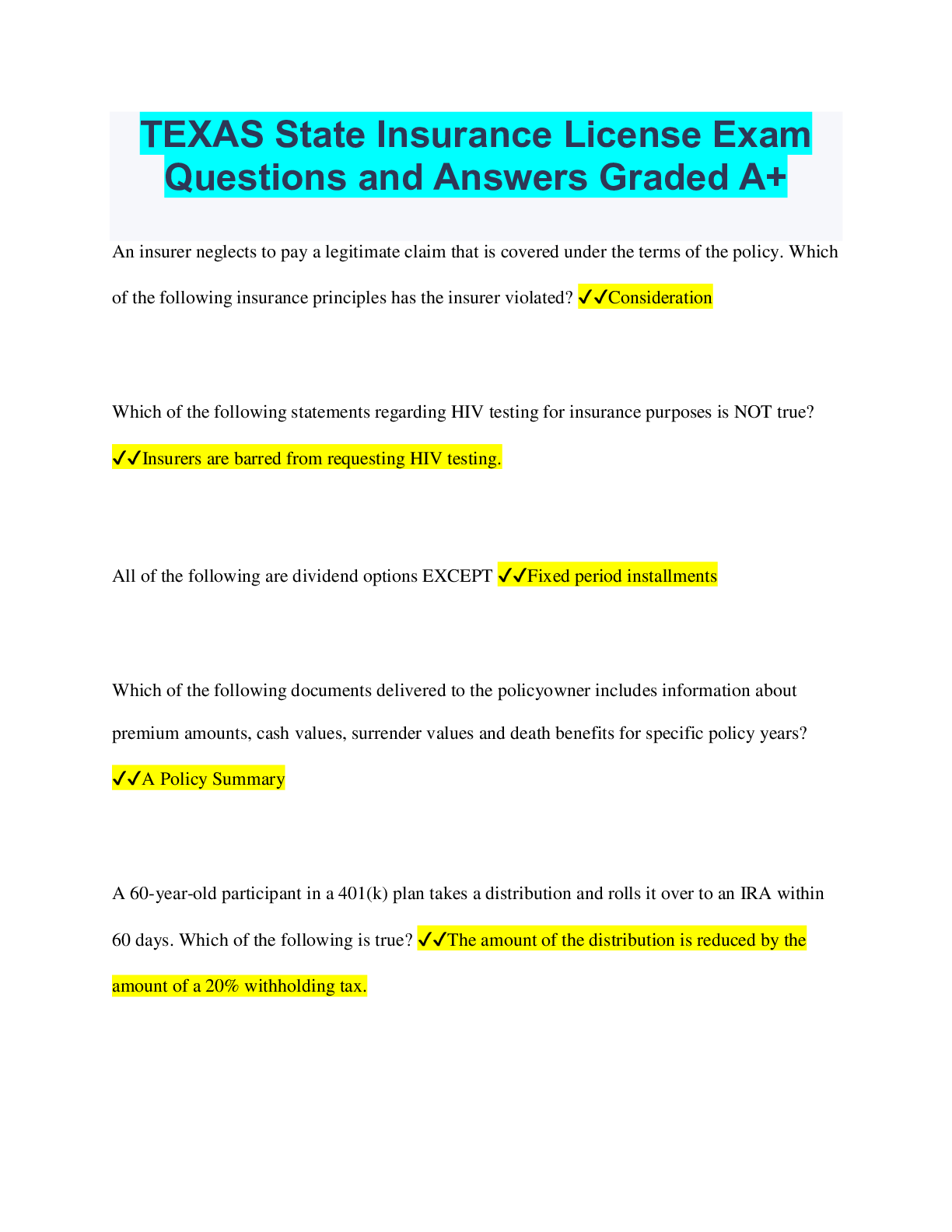*NURSING > QUESTIONS & ANSWERS > HESI 4 Exam Questions and Answers Latest 2022 with Guaranteed Satisfaction (All)
HESI 4 Exam Questions and Answers Latest 2022 with Guaranteed Satisfaction
Document Content and Description Below
HESI 4 Exam Questions and Answers Latest 2022 with Guaranteed Satisfaction 301. If the nurse is initiating IV fluid replacement for a child who has dry, sticky mucous membranes, flushed skin, and ... fever of 103.6 F. Laboratory finding indicate that the child has a sodium concentration of 156 mEq/L. What physiologic mechanism contributes to this finding? Correct Answer-Insensible loss of body fluids contributes to the hemoconcentration of serum solutes. Rationale: Fever causes insensible fluid loss, which contribute to fluid volume and results in hemoconcentration of sodium (serum sodium greater than 150 mEq/L). Dehydration, which is manifested by dry, sticky mucous membranes, and flushed skin, is often managed by replacing lost fluids and electrolytes with IV fluids that contain varying concentration of sodium chloride. Although other options are consistent with fluid volume deficit, the physiologic response of hypernatremia is explained by hem concentration. 302. During a Woman's Health fair, which assignment is the best for the Practical Nurse (PN) who is working with a register nurse (RN) Correct Answer-Prepare a woman for a bone density screening. Rationale: A bone density screening is a fast, noninvasive screening test for osteoporosis that can be explained by the PN. There is no additional preparation needed (A) required a high level of communication skill to provide teaching and address the client's fear. (B) Requires a higher level of client teaching skill than responding to one client. (D) Requires higher level of knowledge and expertise to provide needed teaching regarding this complex topic. 303. An adult client present to the clinic with large draining ulcers on both lower legs that are characteristics of Kaposi's sarcoma lesions. The client is accompanied by two family member. Which action should the nurse take? Correct Answer-Send family to the waiting area while the client's history is taking. Rationale: To protect the client privacy, the family member should be asked to wait outside while the client's history is take. Gloves should be worn when touching the client's body fluids if the client is HIV positive and these lesion are actually Kaposi sarcoma lesion. HIV testing cannot legally be done without the client explicit permission. A further assessment can be implemented after the family left the room. 304. An adult client is exhibit the maniac stage of bipolar disorder is admitted to the psychiatric unit. The client has lost 10 pounds in the last two weeks and has no bathed in a week "I'm trying to start a new business and "I'm too busy to eat". The client is oriented to time, place, person but not situation. Which nursing problem has the greatest priority? Correct Answer-Imbalance nutrition. Rationale: The client's nutritional status has the highest priority at this time, and finger foods are often provided, so the client who is on the maniac phase of bipolar disease can receive adequate nutrition. Other options are nursing problems that should also be addresses with the client's plan of care, but at this stage in the client's treatment, adequate nutrition is a priority. 305. The nurse is preparing a discharge teaching plan for a client who had a liver transplant. Which instruction is most important to include in this plan? Correct Answer-Avoid crowds for first two months after surgery. Rationale: Cyclosporine immunosuppression therapy is vital in the success of liver transplantation and can increase the risk for infection, which is critical in the first two months after surgery. Fever is often. 306. The nurse is assessing a client's nailbeds. Witch appearance indicates further follow-up is needed for problems associated with chronic hypoxia? Correct Answer307. A client who had a percutaneous transluminal coronary angioplasty (PTCA) two weeks ago returns to the clinic for a follow up visit. The client has a postoperative ejection fraction ejection fraction of 30%. Today the client has lungs which are clear, +1 pedal edema, and a 5pound weight gain. Which intervention the nurse implement? Correct Answer-Assess compliance with routine prescriptions. Rationale: Fluid retention may be a sign that the client is not taking the medication as prescribed or that the prescriptions may need adjustment to manage cardiac function post-PTCA (normal ejection fraction range is 50 to 75%). 308. The RN is assigned to care for four s [Show More]
Last updated: 1 year ago
Preview 1 out of 45 pages
.png)
Also available in bundle (1)
.png)
HESI BUNDLED EXAMS WITH COMPLETE SOLUTIONS (ALL RATED A+)
HESI BUNDLED EXAMS WITH COMPLETE SOLUTIONS (ALL RATED A+)
By Nutmegs 1 year ago
$18
11
Reviews( 0 )
Document information
Connected school, study & course
About the document
Uploaded On
Jun 11, 2022
Number of pages
45
Written in
Additional information
This document has been written for:
Uploaded
Jun 11, 2022
Downloads
0
Views
86

.png)
.png)
.png)
.png)
.png)
.png)


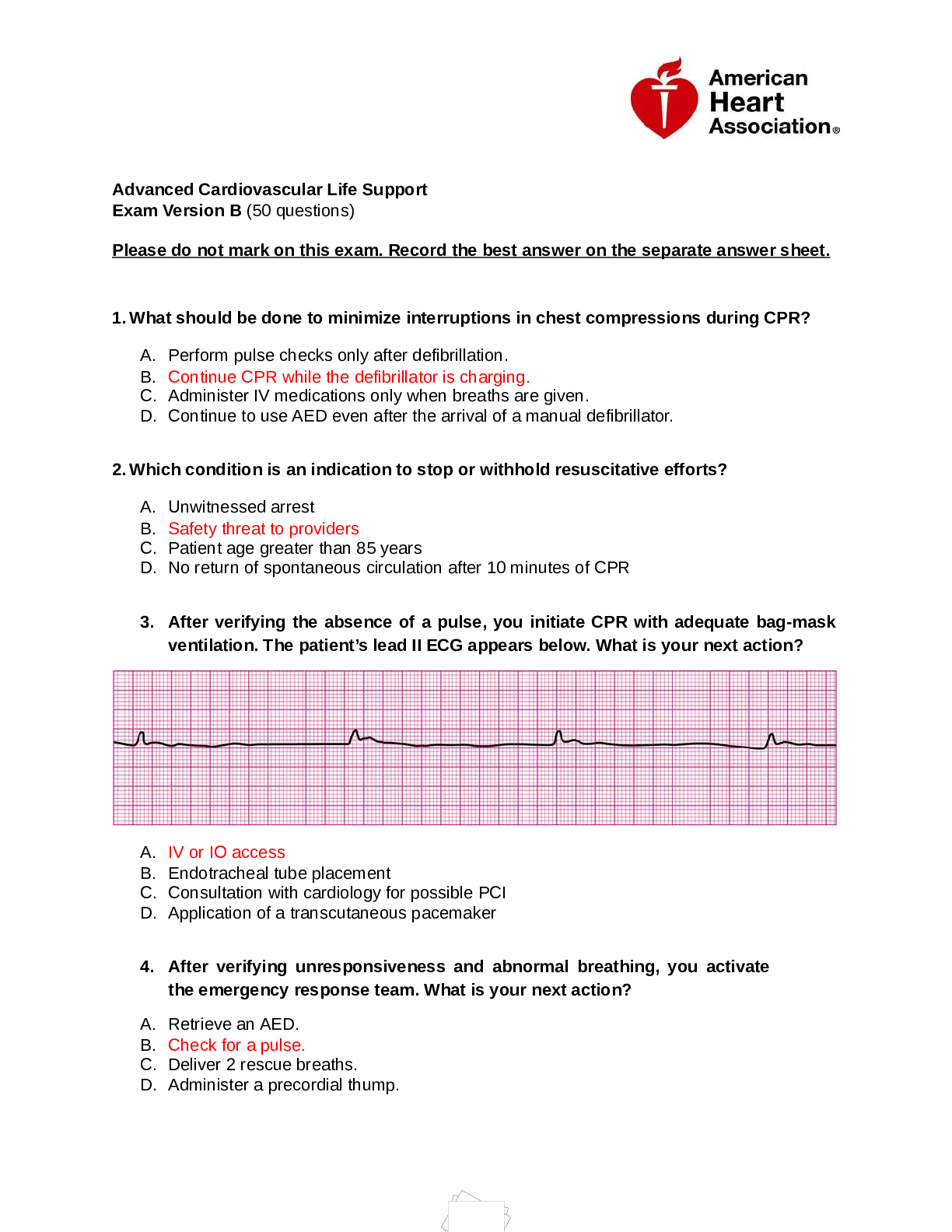
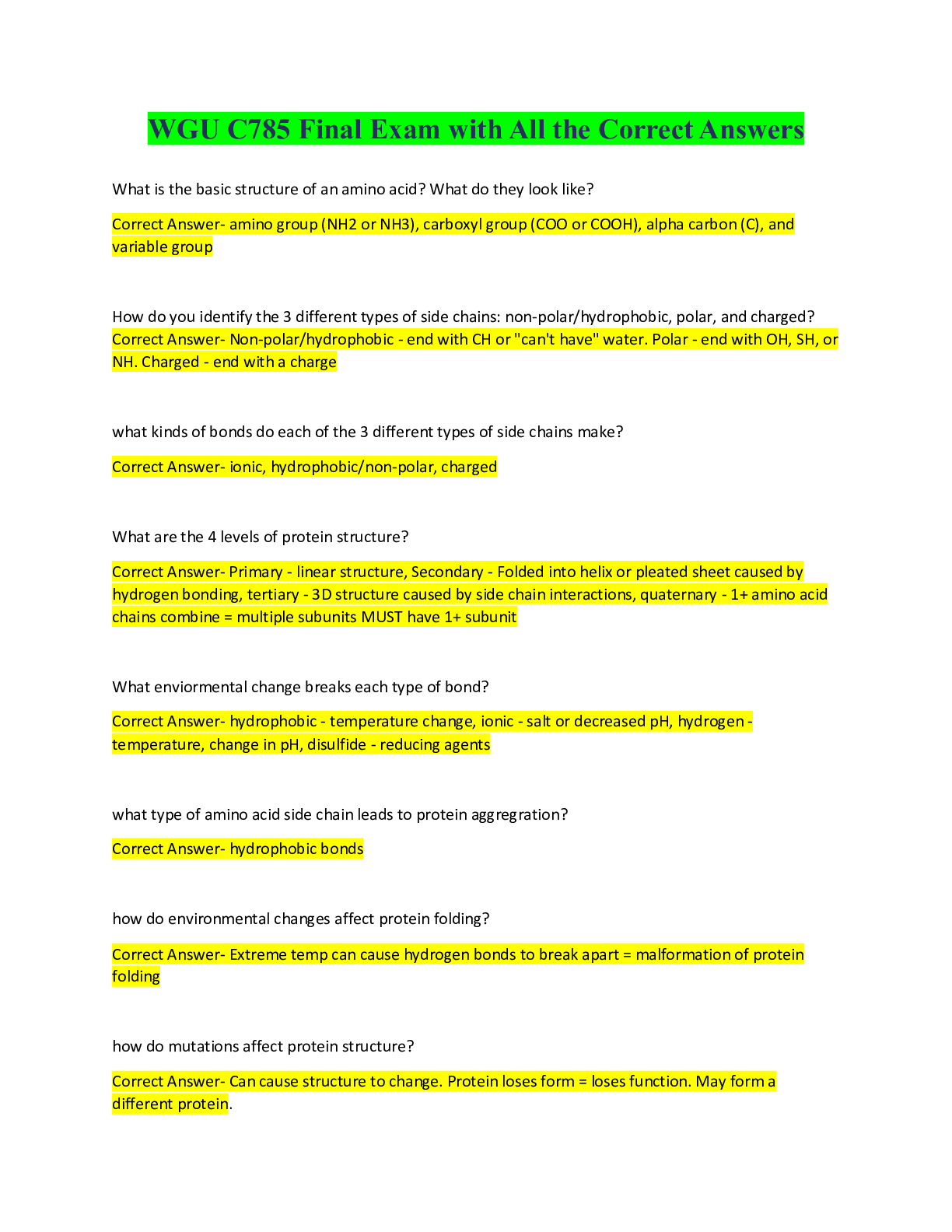
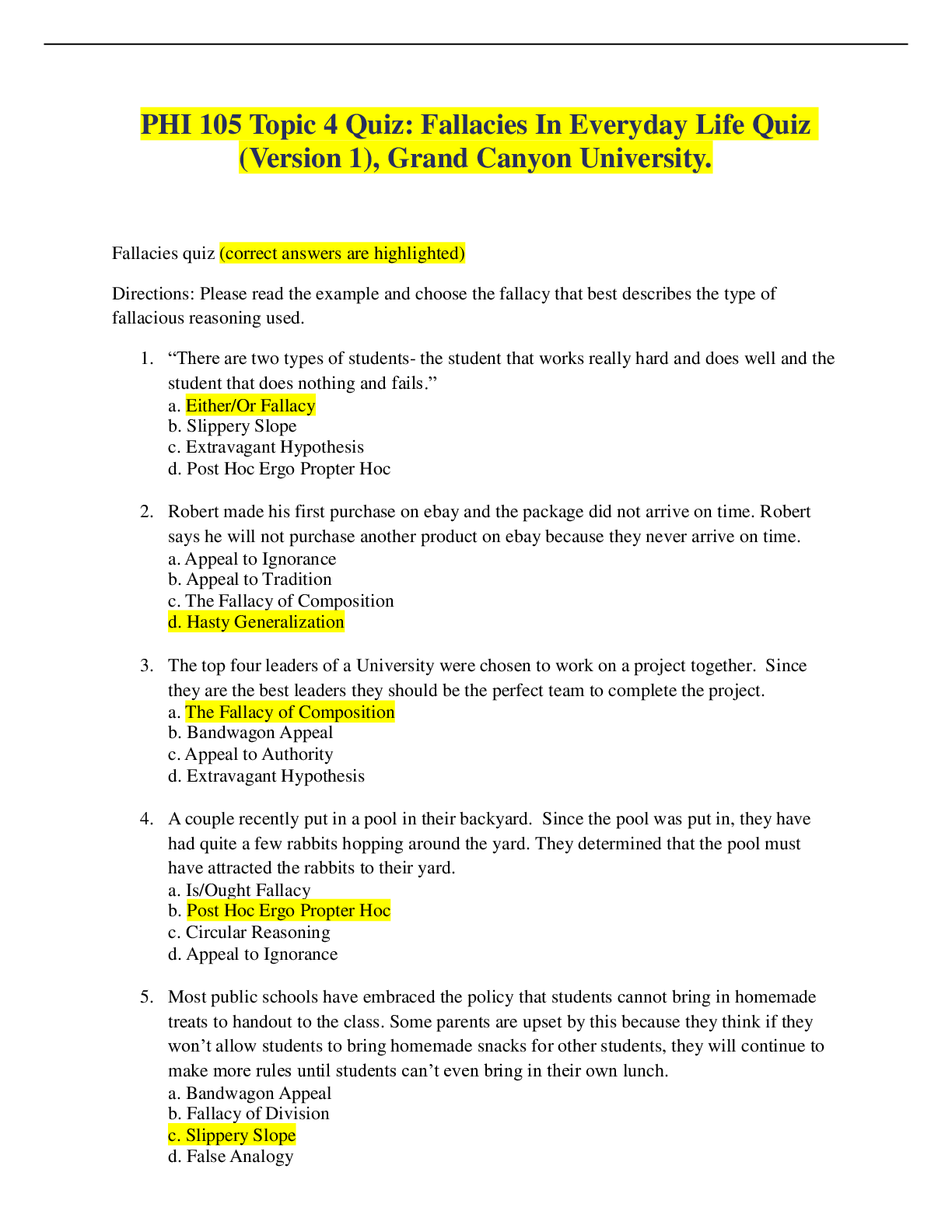
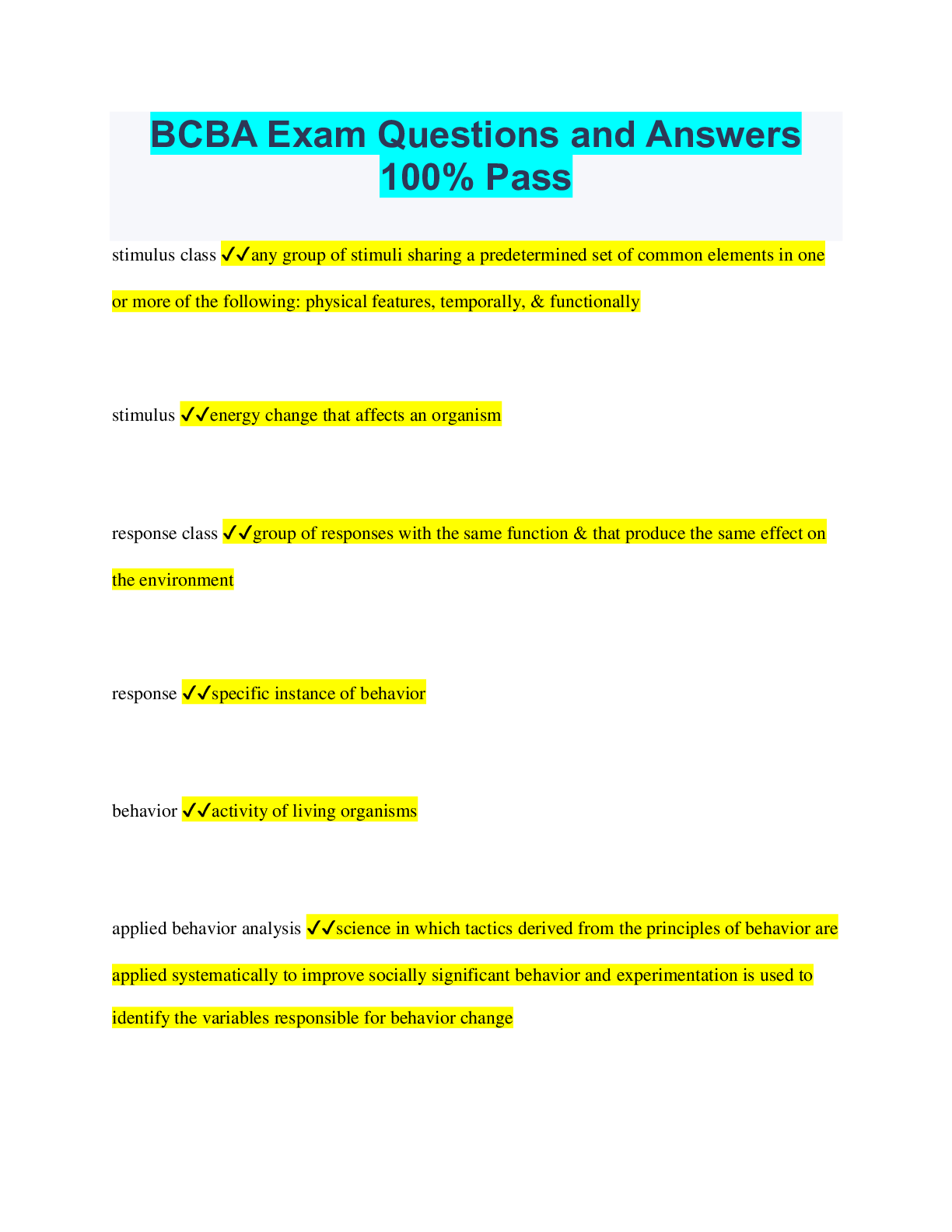
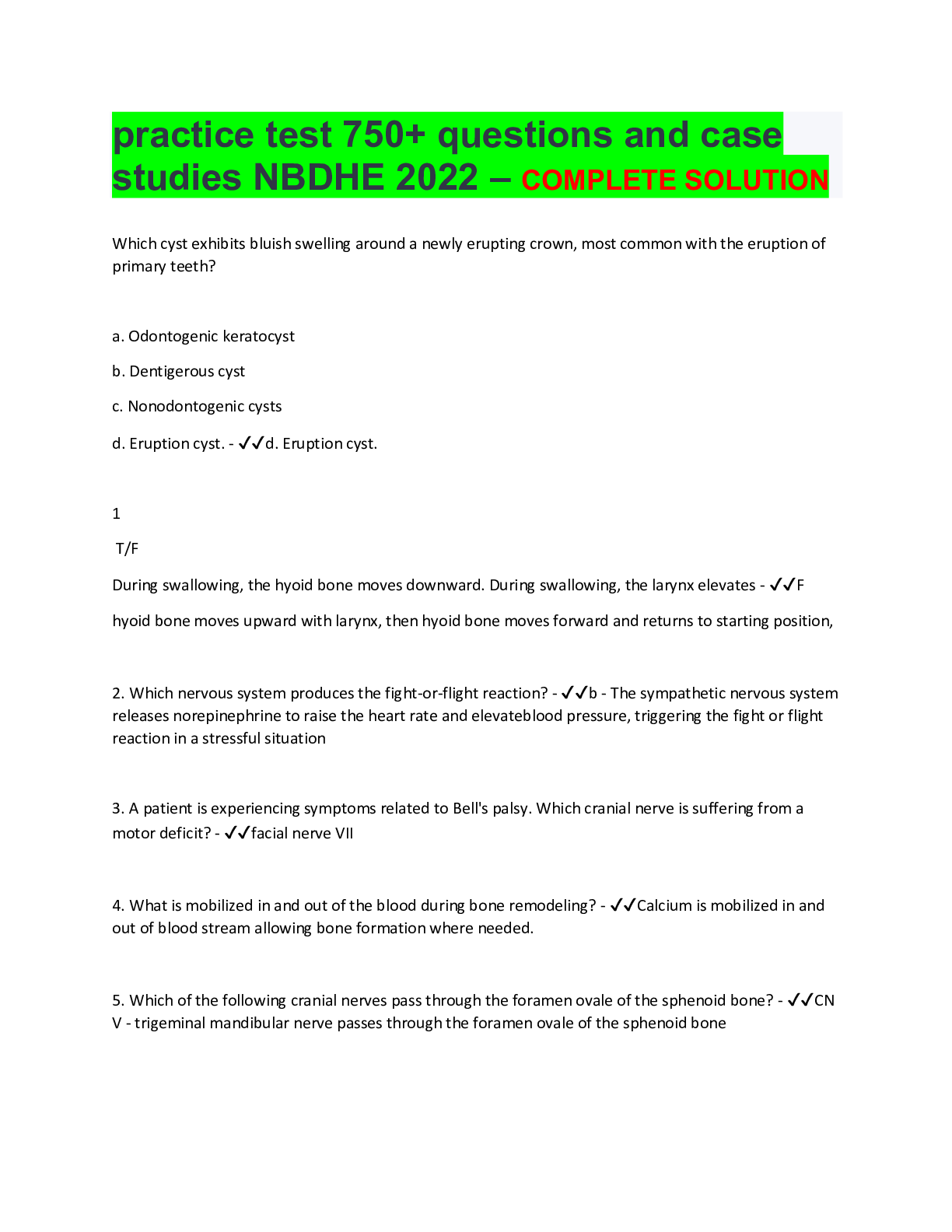
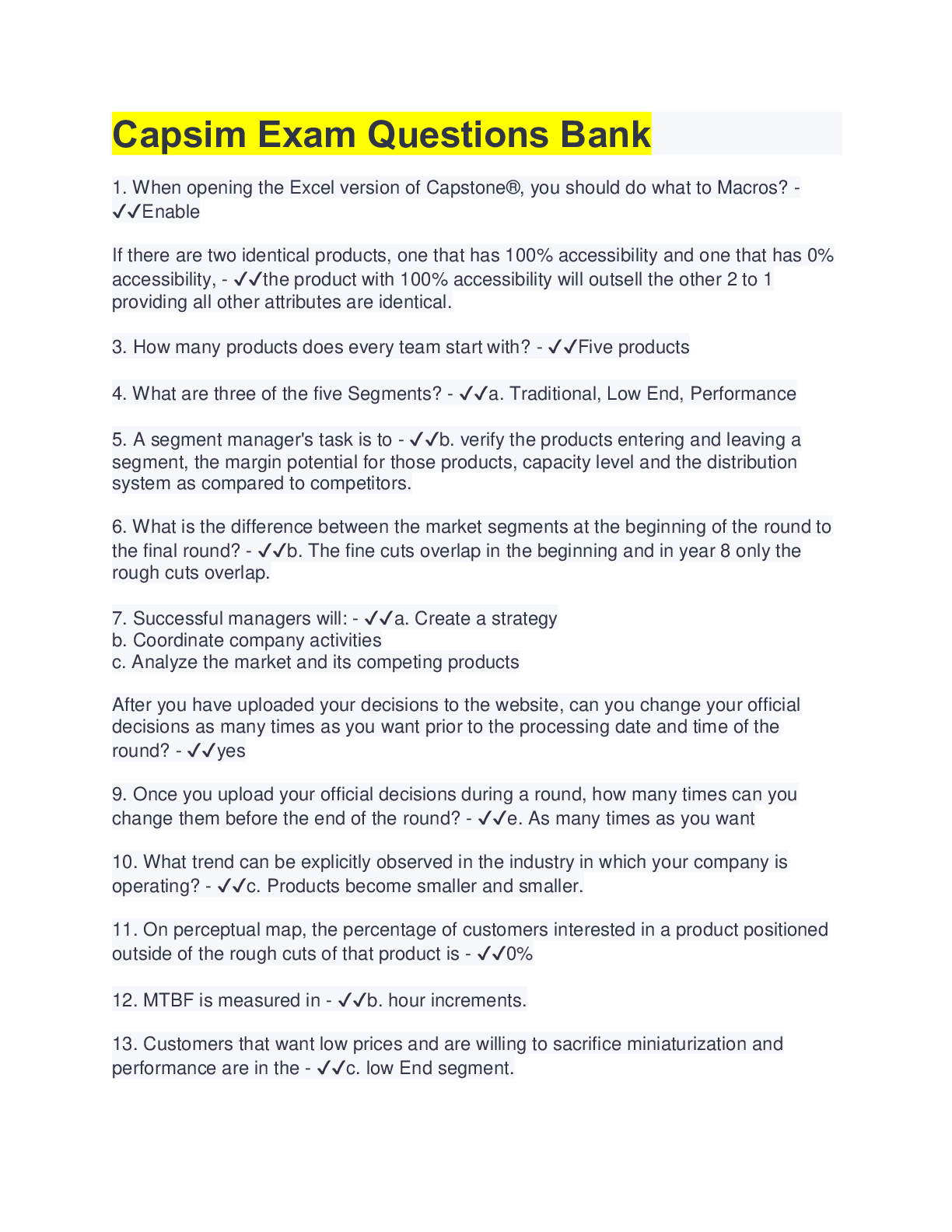
.png)
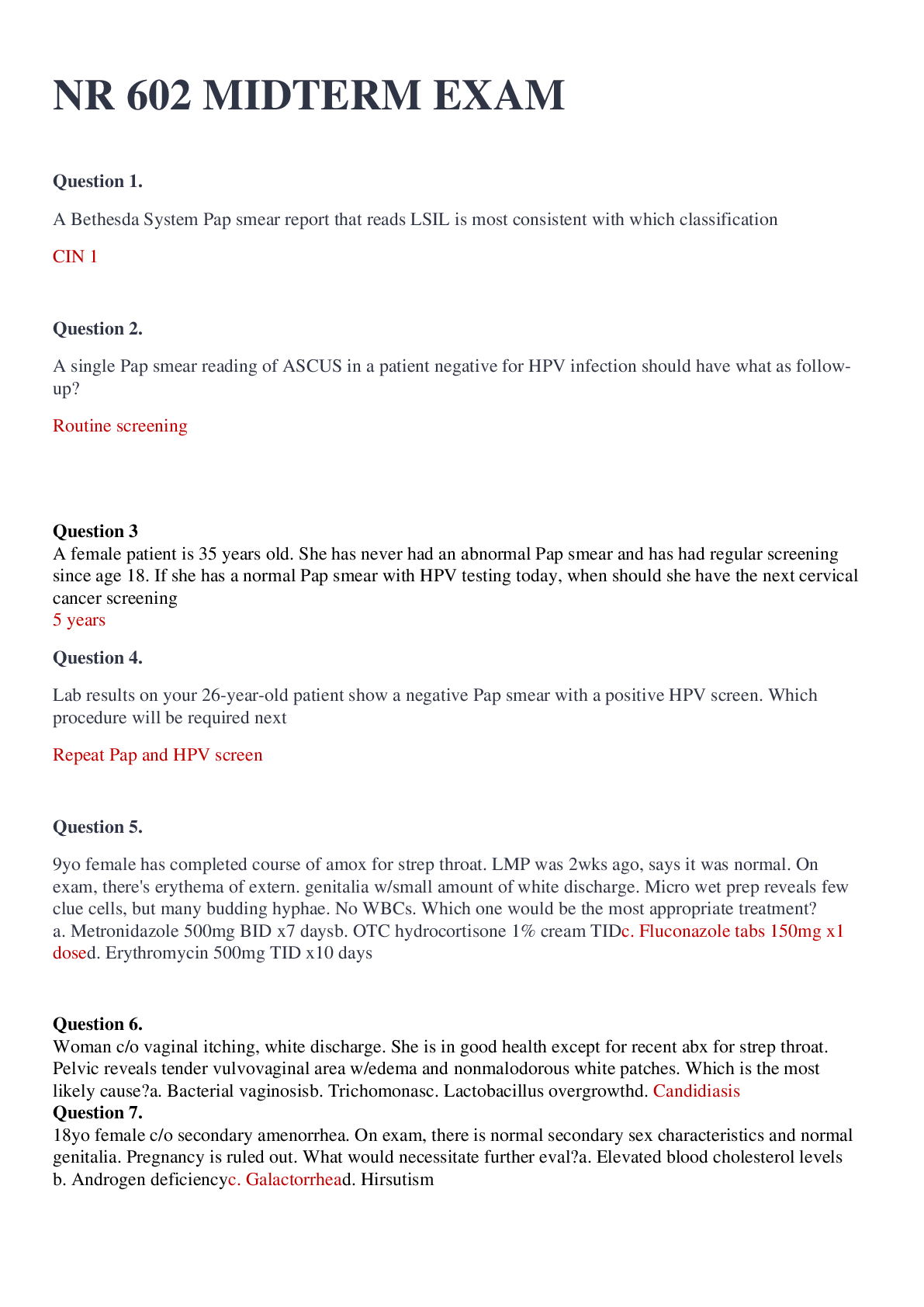
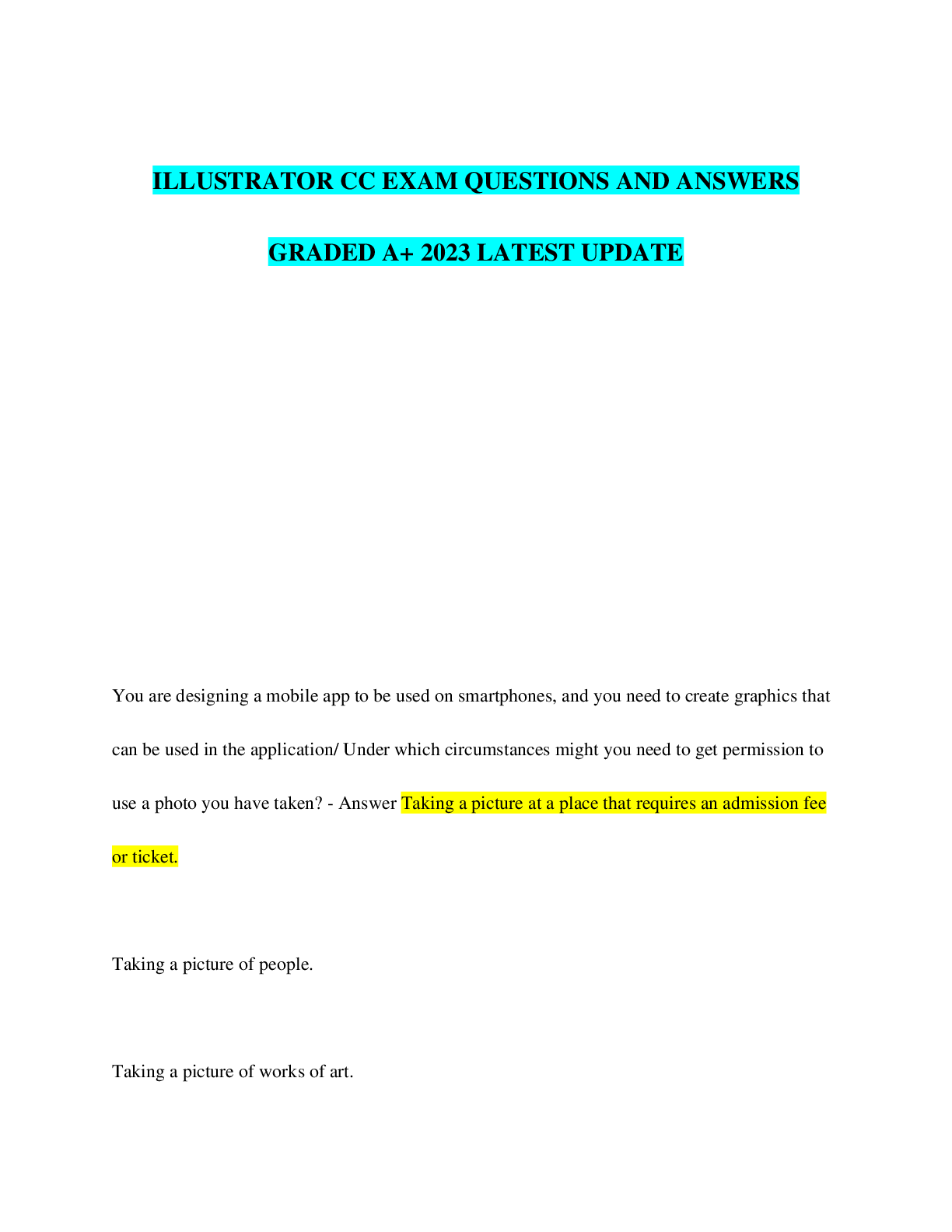
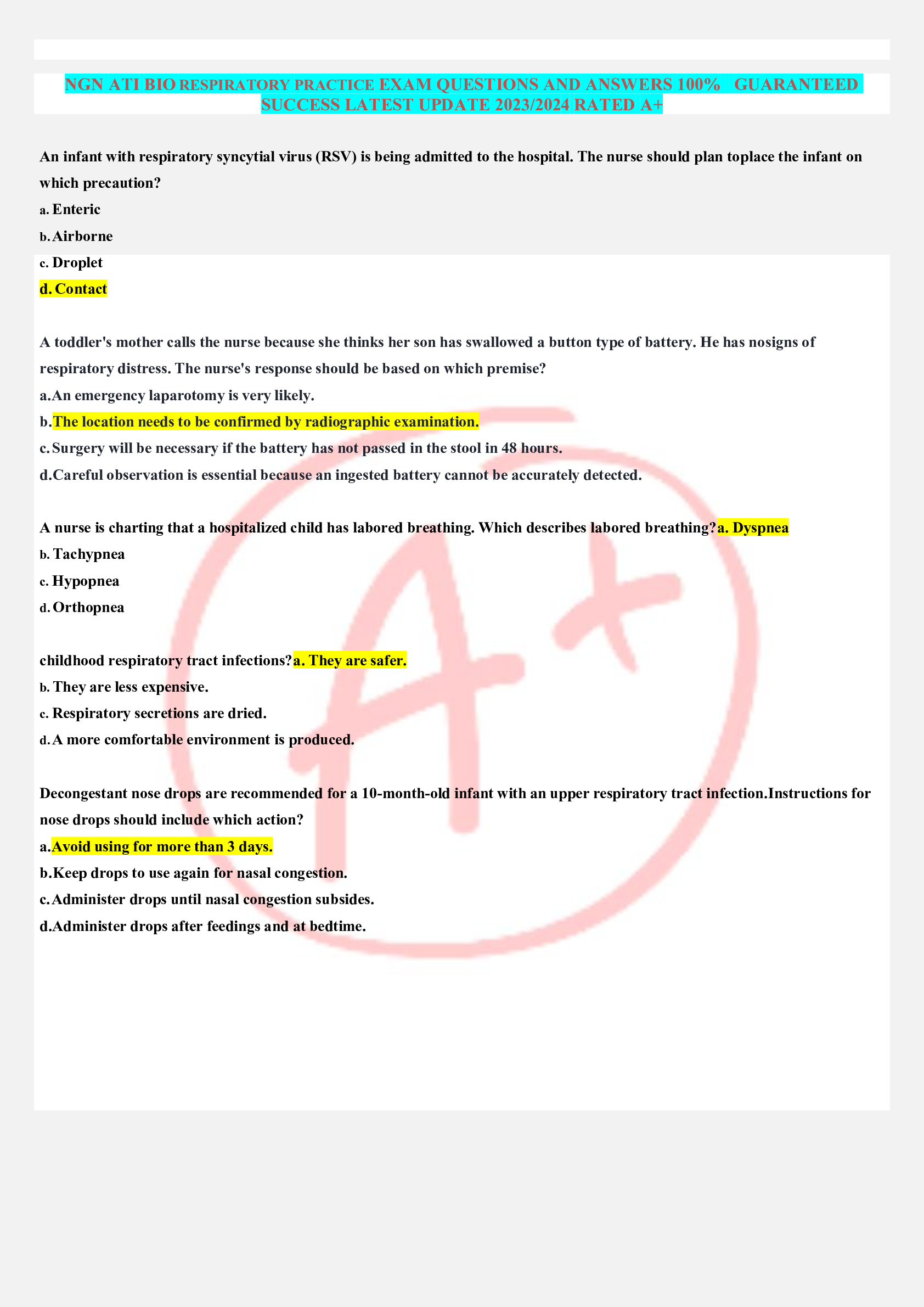
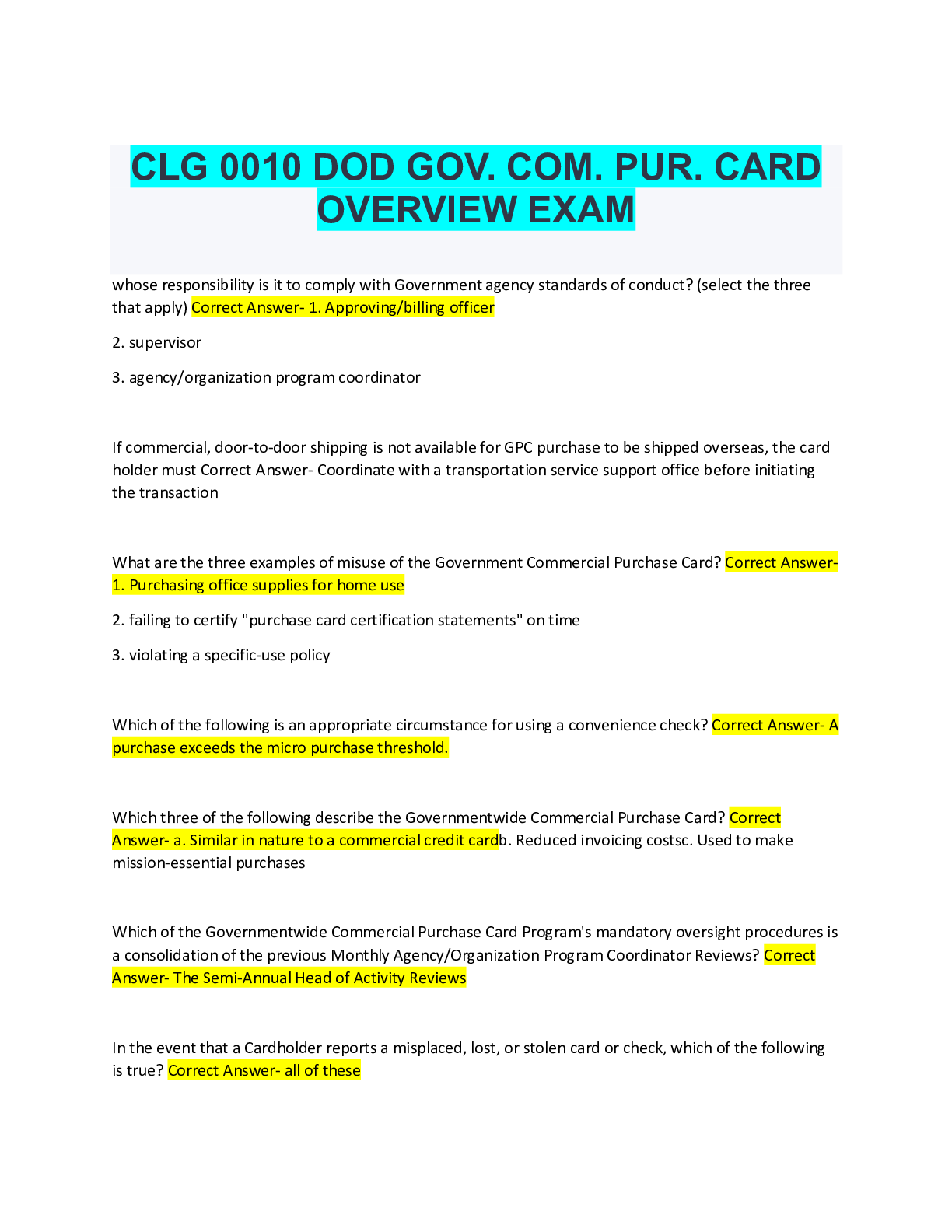
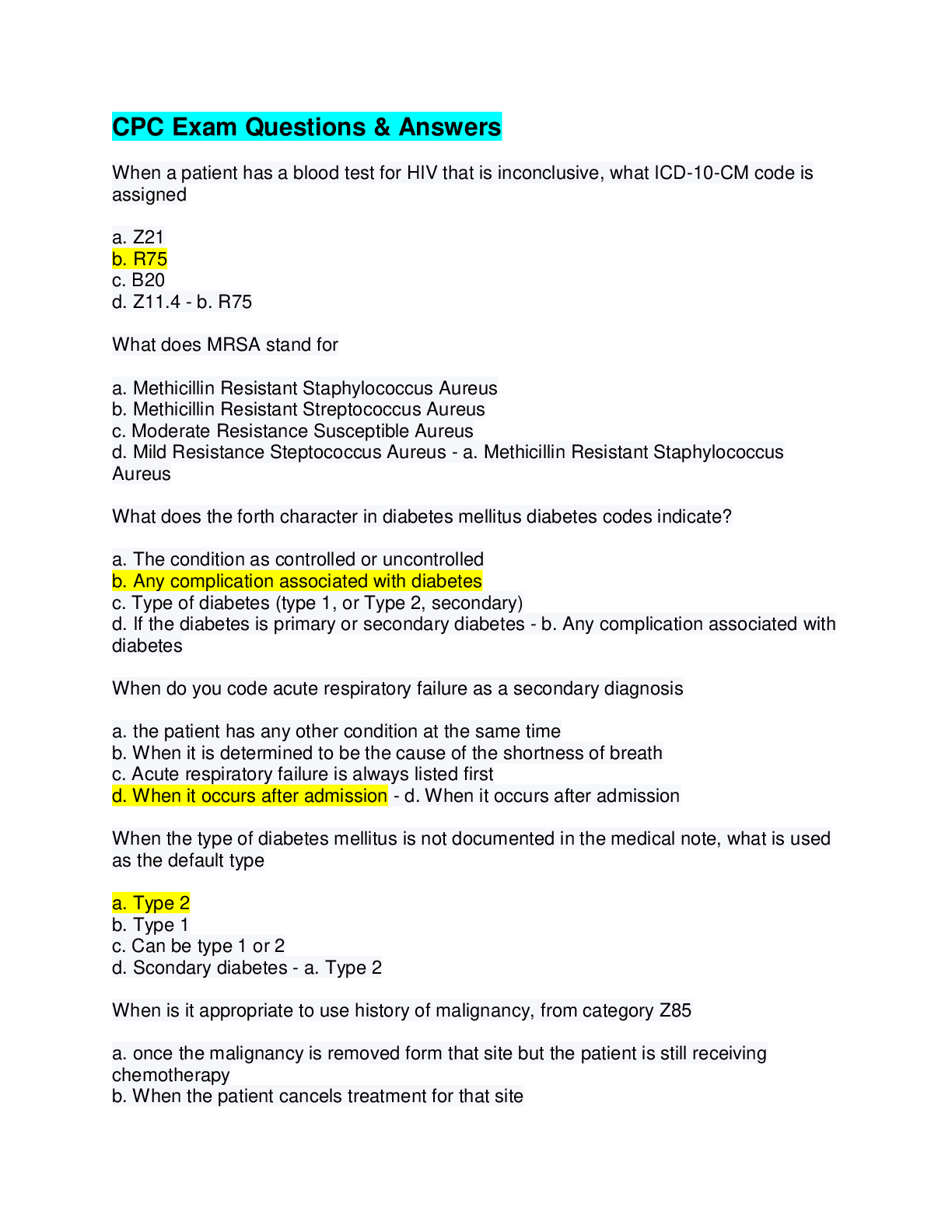
.png)
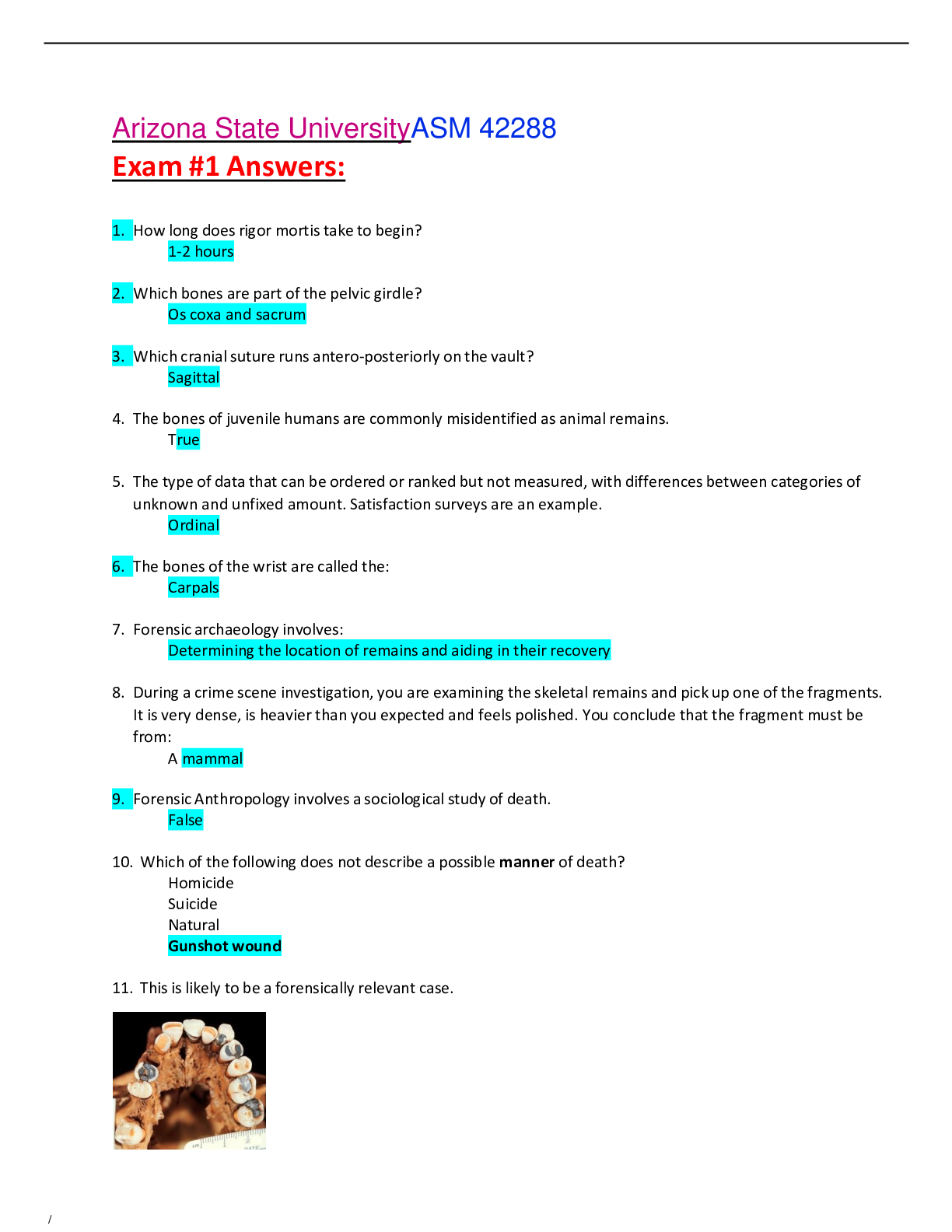
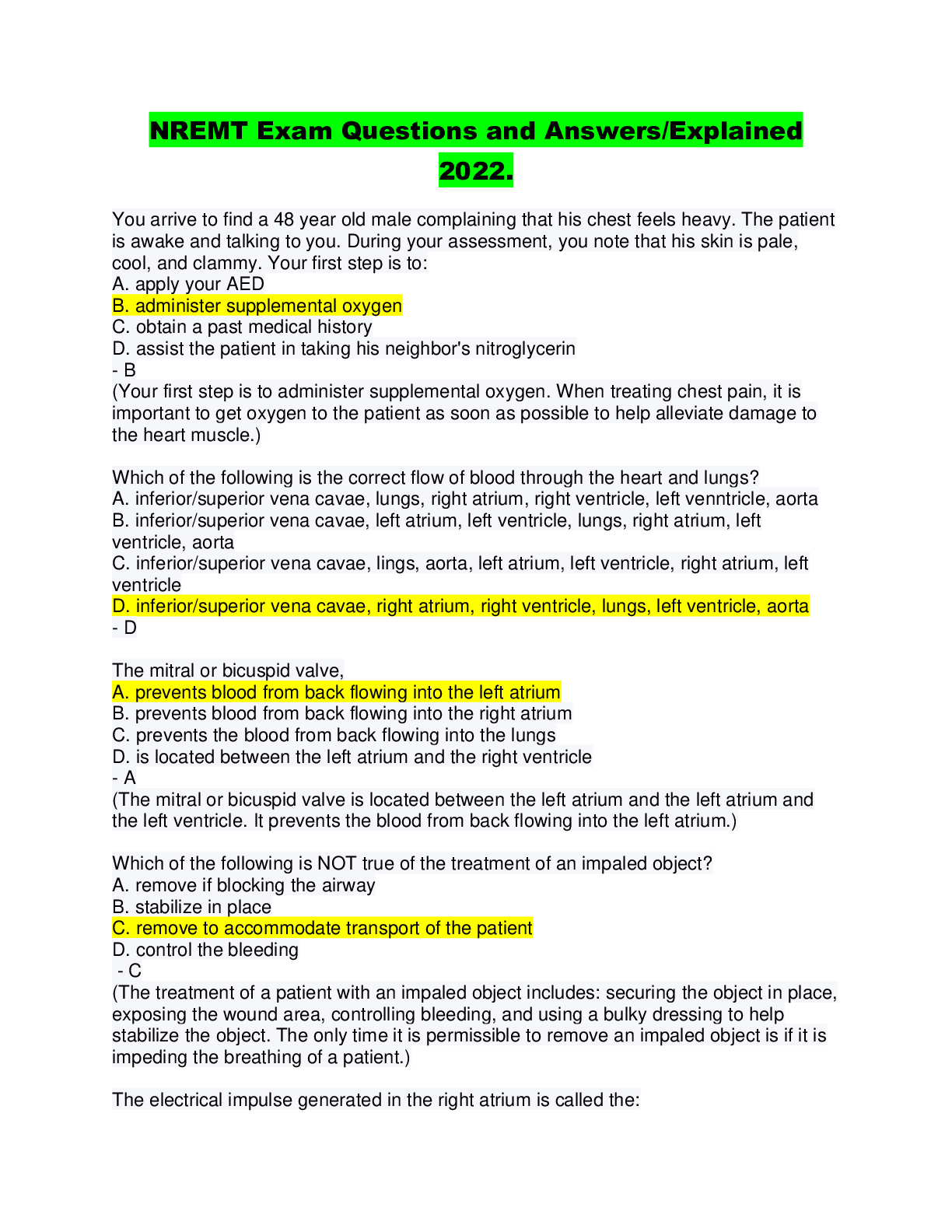
.png)
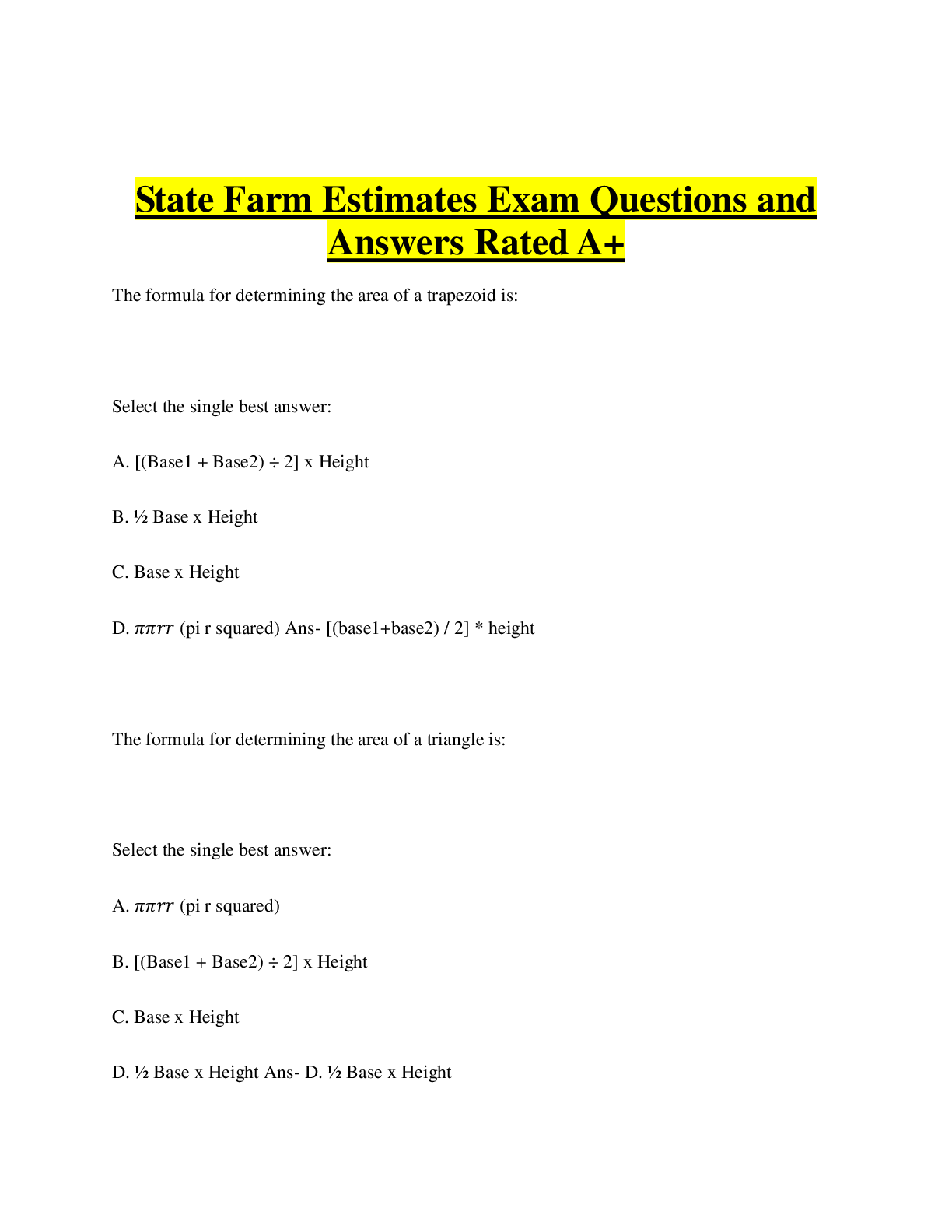
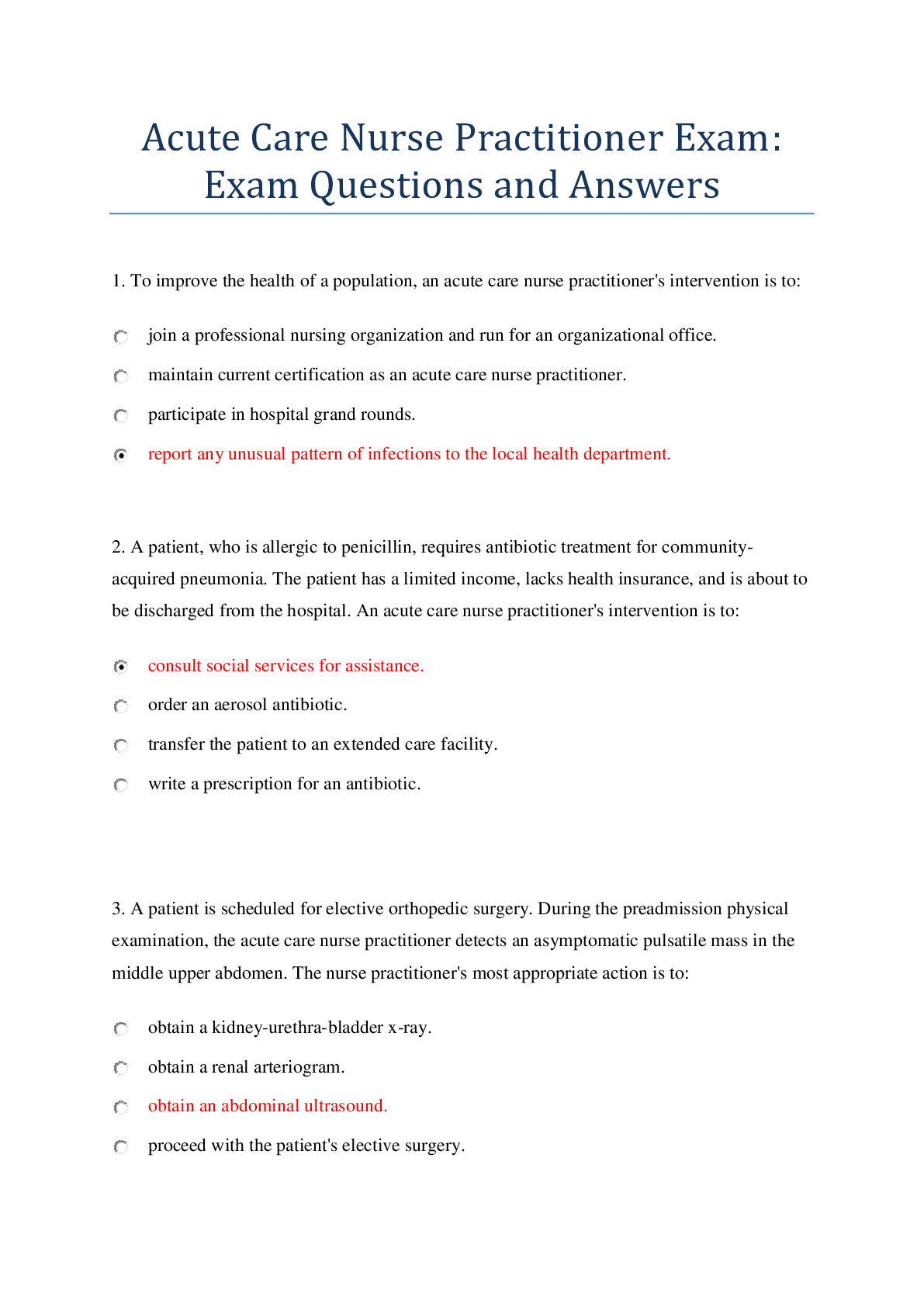
.png)
